
Roots
Consider for a moment the very blueprint of a textured strand ❉ the elliptical follicle. It is a biological reality, yes, but one that has woven itself into the very fabric of identity, shaping not only physical appearance but also the legacy of care, resistance, and artistry for Black and mixed-race communities across generations. This foundational shape, nestled within the scalp, quietly dictates the coils and curves that dance outwards, influencing everything from hydration needs to styling potential. To truly appreciate the journey of textured hair, one must first look to this elemental source, understanding how its biological inclinations have been observed, understood, and honored through the profound lens of heritage.

The Follicle’s Ancient Blueprint ❉ Shape and Form
At the heart of every hair strand lies its follicle, a miniature organ within the skin that determines the hair’s very shape and direction of growth. For textured hair, this follicle is notably oval or elliptical, rather than round. The more pronounced the oval, the tighter the curl, coil, or kink will be. This asymmetry in the follicle means that the hair fiber itself grows with a natural twist, forming a helical, spiral, or corkscrew structure as it emerges from the scalp.
Straight hair, by contrast, springs from round follicles, allowing the hair to grow evenly in a linear direction. This biological distinction explains why textured hair often spirals upon itself, creating the characteristic volume, spring, and sometimes, the delicate nature associated with its structure.
Scientific inquiry today helps us grasp these mechanics with precision, yet ancient peoples, through keen observation and communal wisdom, understood the intrinsic behavior of their hair without microscopes or genetic maps. They recognized the patterns of dryness, the tendencies toward tangling, and the resilience of these curls, adapting their care practices accordingly. The curl’s innate physics—how weight influences its shape, or how hydration preserves its form—was likely understood through lived experience long before modern equations emerged.
The elliptical follicle shape is the biological genesis of textured hair’s characteristic coils, influencing its inherent nature and care requirements.

What Determines Hair’s Natural Curvature?
The question of what truly determines a hair’s natural curvature extends beyond the follicle’s opening. Inside the follicle, the way cells multiply and distribute keratin, the protein making up hair, plays a critical role. In straight hair, cell distribution is uniform, yielding a round follicle and an even strand. However, in curly hair, this process is asymmetrical, correlating with the curved follicle and resulting in an elliptical hair fiber that allows it to coil.
While genetics serve as the primary architect of this follicle shape, other factors, such as hormones or nutritional changes, can influence hair texture temporarily, though the follicle’s underlying shape remains steadfast. Understanding these inherent qualities has always been foundational to effective care, whether guided by ancestral wisdom or contemporary science.

Whispers of Classification ❉ Ancestral Understandings
Before modern scientific classification systems categorized hair into types and subtypes, ancestral communities possessed their own deep, nuanced understandings of hair texture. These were not abstract typologies but lived perceptions rooted in practical care, communal identity, and spiritual connection. Hair was a visible language, communicating age, marital status, social standing, and ethnic ties. The distinct patterns of hair, from tight coils to looser waves, dictated not only aesthetic expressions but also specific cultural practices and communal rituals.
In pre-colonial African societies, hair was a powerful symbol, conveying messages about one’s family background, social status, and spirituality. Hairstyles often served as identifiers, allowing individuals to signal their tribal affiliation or geographical origins. For example, in the Wolof culture of Senegal, young girls might partially shave their hair to indicate they were not yet courting, while the Karamo people of Nigeria were known for a specific coiffure involving a shaved head with a single tuft. These classifications were experiential, recognizing the diverse behaviors of hair and the specific attention each type required.
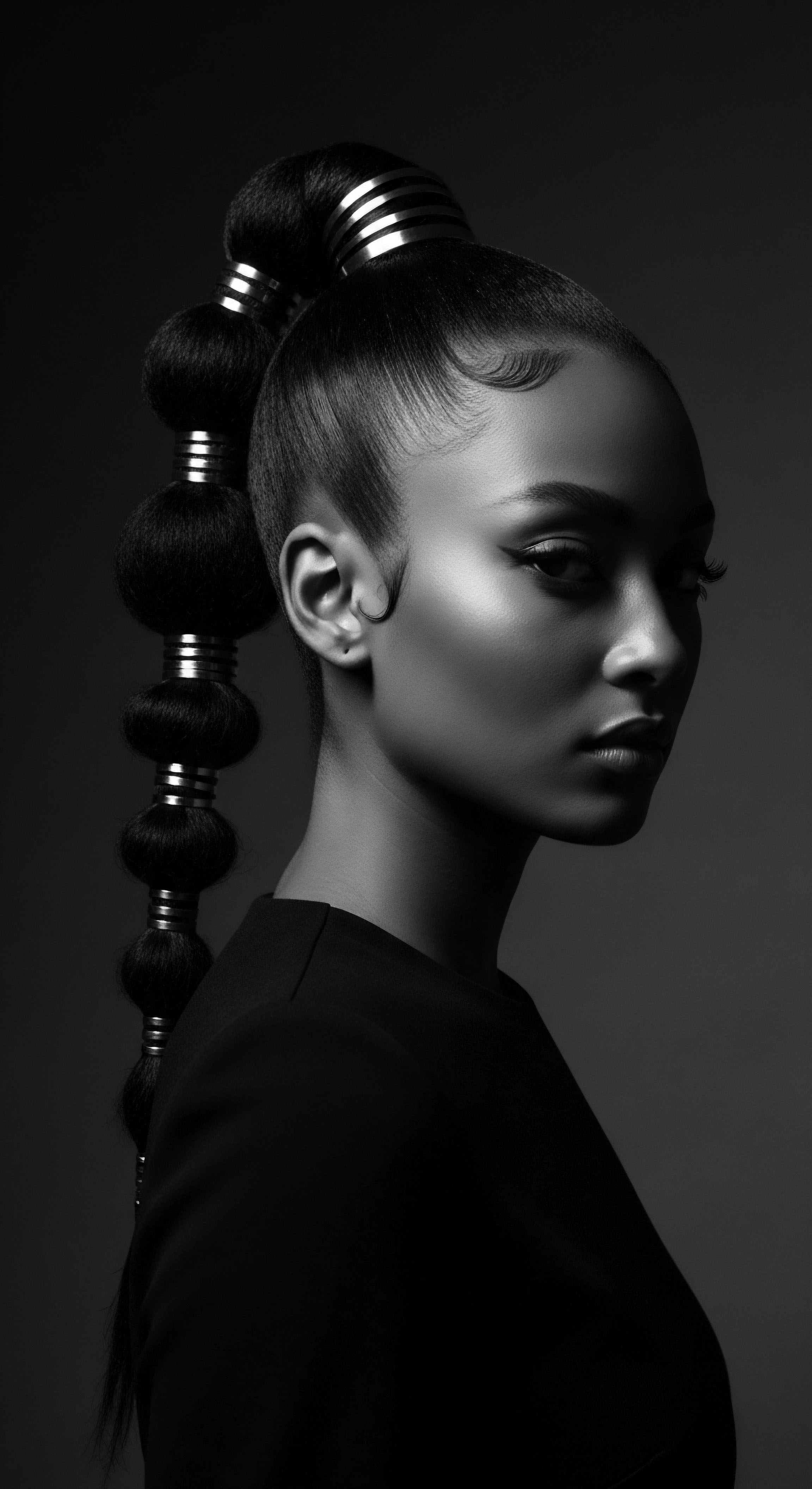
Where Biology Meets Legacy ❉ The Elliptical Shape’s Influence
The biological reality of the elliptical follicle profoundly influenced ancestral hair care practices, even if the precise scientific term was unknown. The tight coils springing from these follicles naturally dry out faster than straight hair due to the difficulty of natural oils traveling down the coiled shaft. This inherent dryness, coupled with the hair’s tendency towards breakage due to its coiled structure and uneven cuticle thickness, necessitated specific moisture-retaining and protective approaches.
Ancestors responded to these needs with practices centered on lubrication, protection, and gentle manipulation. The use of natural oils and butters, as well as protective styles, were not merely aesthetic choices; they were intelligent adaptations to the hair’s intrinsic characteristics, informed by generations of practical application. The understanding was passed down, a living science that honored the hair’s true nature.
| Aspect of Hair Curl Pattern |
| Ancestral Observation Recognized distinct coils, kinks, and waves; understood variations between individuals and groups. |
| Modern Scientific Understanding of Elliptical Follicle Oval or flattened follicles cause hair to twist and coil; the degree of ovalness correlates to curl tightness. |
| Aspect of Hair Moisture Retention |
| Ancestral Observation Noticed hair dried quickly, requiring frequent oiling and protective measures. |
| Modern Scientific Understanding of Elliptical Follicle Coiled structure hinders sebum travel, leading to dryness; cuticle layers in kinky hair are tightly packed, making it harder to saturate with water. |
| Aspect of Hair Fragility |
| Ancestral Observation Understood hair's delicate nature, leading to gentle handling and protective styles. |
| Modern Scientific Understanding of Elliptical Follicle Coiled structure and uneven cuticle thickness make textured hair more prone to breakage. |
| Aspect of Hair The continuity between ancestral wisdom and scientific discovery highlights a persistent, adaptive understanding of textured hair’s unique needs across time. |
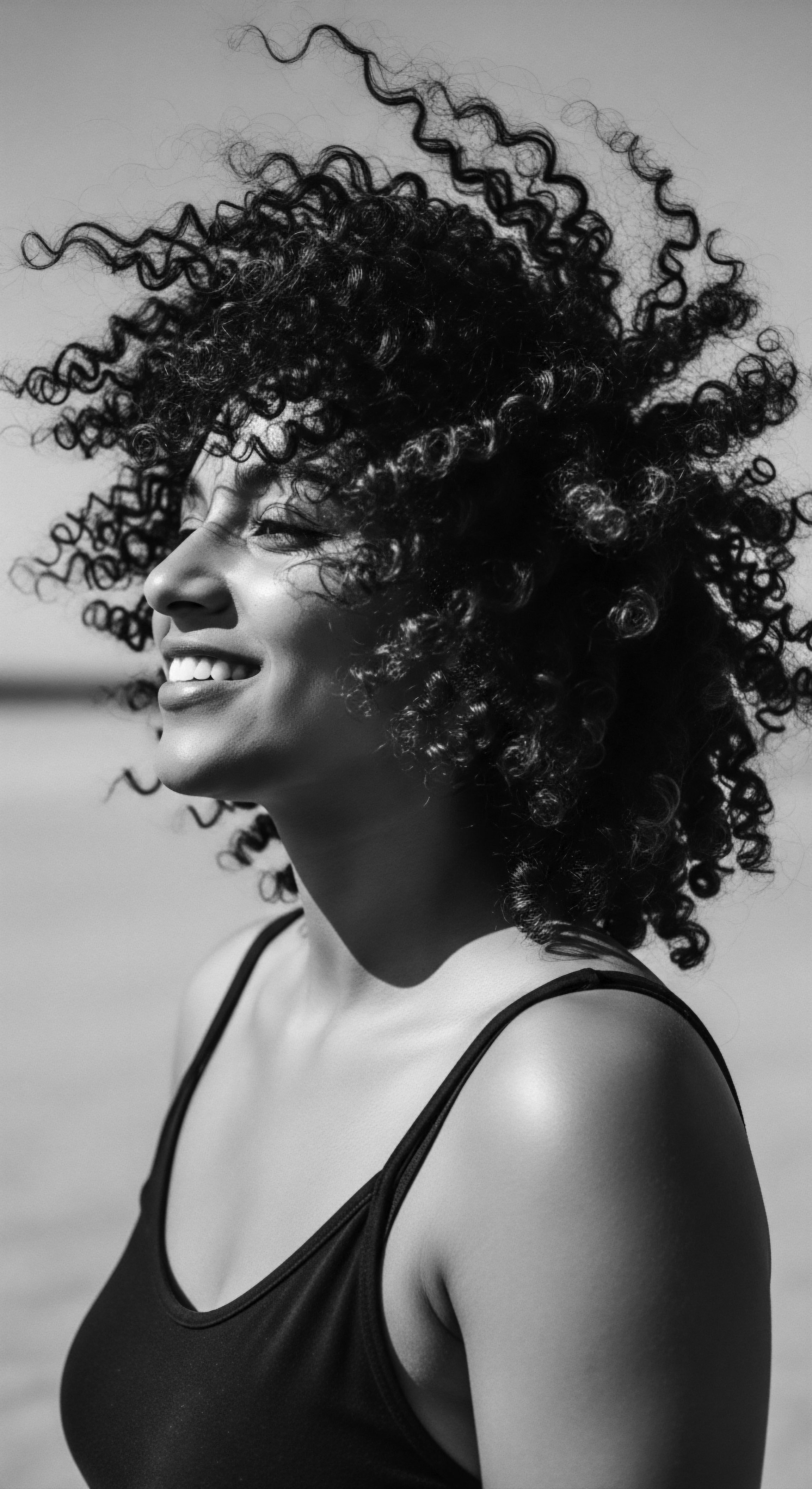
Ritual
From the primal understanding of hair’s very structure flows a vibrant river of ritual – the intentional shaping and adornment of textured strands, a practice deeply steeped in ancestral artistry. The elliptical follicle, in its silent dictation of curl patterns, has always guided the hands of those who care for textured hair. This section explores how historical styling techniques, tools, and transformative practices were not merely decorative but also a direct response to, and celebration of, the hair’s unique geometry, forming a living heritage of adornment and protection.

Shaping a Crown ❉ Styles Born from Follicle Geometry
The unique coiled structure of textured hair, stemming from the elliptical follicle, naturally lends itself to a myriad of protective styles. These are not simply trends; they are echoes of ancient wisdom, developed over millennia to safeguard delicate strands from environmental elements and mechanical stress. Braids, twists, and locs, recognized today as protective styles, have their roots deeply embedded in African cultures, dating back thousands of years.
In ancient African civilizations, these styles held deep cultural and spiritual meanings. Cornrows, for instance, were a visual language, capable of conveying a person’s age, marital status, social position, or tribal identity. For the Fulani people, braids were adorned with beads and cowrie shells, sometimes even silver coins, to denote status. These intricate styles often took hours, even days, to complete, fostering a profound sense of community and bonding among women.
The practice of hair threading, known as “Irun Kiko” among the Yoruba people of Nigeria since the 15th century, served not only as a stylistic choice but also as a method for length retention. Each style was a direct engagement with the hair’s coiling nature, designed to minimize tangling and breakage while showcasing its inherent beauty.
Protective styling, born from the unique coiled nature of hair from elliptical follicles, is a testament to ancestral ingenuity in preserving hair health and identity.
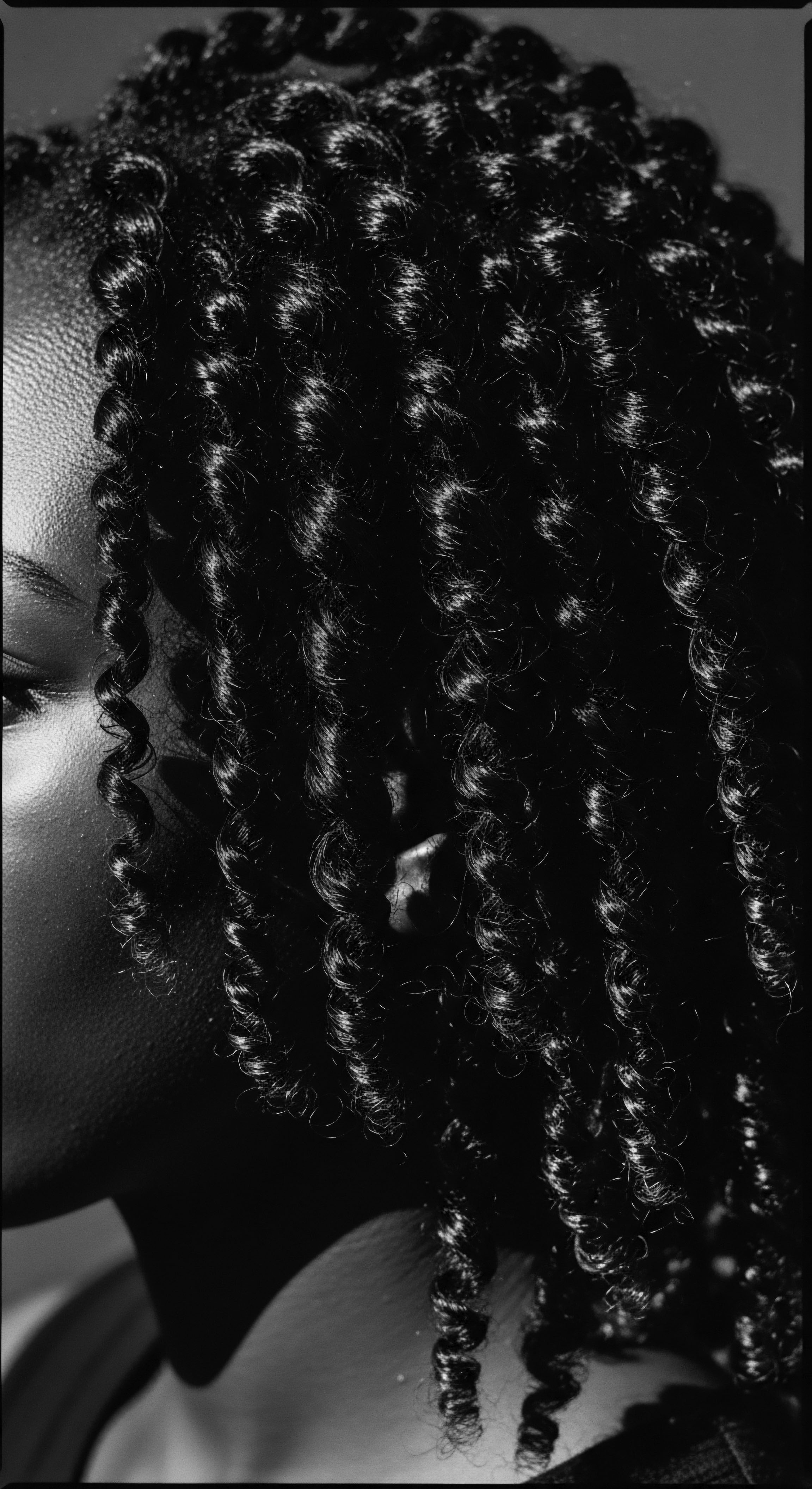
The Artisan’s Touch ❉ Tools and Techniques Across Epochs
The hands of the ancestral stylist, guided by the unique properties of hair emerging from elliptical follicles, crafted tools and techniques that often paralleled, or even surpassed, modern innovations in their effectiveness. While specific archaeological finds of ancient African hair tools are less common in detailed historical records than European implements, the continuity of practices suggests the materials at hand were cleverly adapted. These might have included combs carved from wood or bone, pins fashioned from natural materials, and various forms of string or fiber for wrapping and threading.
The very act of braiding or twisting is a technique that directly addresses the elliptical shape of the follicle. By grouping individual strands into larger, consolidated units, tension is distributed, and individual hair fibers are shielded from daily friction and environmental stressors. This natural coiling means the hair is often more fragile than straight hair, making gentle manipulation and protective styling paramount. The ancestral technique of hair oiling, a practice with origins dating back millennia in various cultures, including South Asia, was also likely applied with an awareness of textured hair’s thirst for moisture.
Warming oils before application, for instance, a common practice in Ayurvedic traditions, helps with deeper absorption into the scalp and hair. This gentle, intentional approach to hair care speaks to a deep ancestral understanding of how best to work with the hair’s inherent structure.

Adornment and Acknowledgment ❉ Historical Hair Augmentation
Beyond natural hair, hair augmentation also holds a significant place in the heritage of textured hair care and expression. Wigs and hair extensions, often made from human hair, wool, or plant fibers, were worn by elites in ancient Egypt as symbols of wealth, status, and religious devotion. The elaborate, intricately braided wigs of Egyptian pharaohs and queens, for example, showcased status and divine connection. This practice highlights an ancient understanding of hair’s versatility and its power as a medium for social communication, even when augmented.
The practice of incorporating precious metals, beads, and cowrie shells into hairstyles also reflects this deep appreciation for hair as an adornment, and it served to further communicate identity and status. These adornments, meticulously placed within braids and other protective styles, were not simply decorative. They were integral to the visual language of hair, reflecting societal roles, marital status, and spiritual beliefs, all while working with the inherent structure and strength provided by the elliptical follicle and the resulting coiled patterns.
A remarkable example of hair augmentation intertwined with historical survival is found during the Transatlantic Slave Trade. Enslaved African women, forcibly removed from their homelands and often stripped of their traditional hairstyles, adapted protective braiding techniques as acts of resistance and cultural preservation. Some accounts suggest that enslaved women, particularly those working in rice fields, would braid rice seeds into their hair as a means of survival, ensuring food and preserving a connection to their homeland’s culture.
These braids also served as covert maps, relaying escape routes without raising suspicion from their enslavers. This powerfully demonstrates how the intrinsic ability of coiled hair to hold structure, a direct consequence of the elliptical follicle, was strategically utilized not only for beauty but for life itself, becoming a silent yet potent symbol of defiance and legacy.

Relay
The journey of textured hair care, guided by the realities of the elliptical follicle, has always been a relay race of wisdom, passed from one hand to the next, through generations. This is where holistic care, nighttime rituals, and problem-solving merge with ancestral insights, demonstrating a continuous, adaptive response to the hair’s unique needs. This section delves into how the inherent qualities of hair stemming from elliptical follicles shaped regimens of radiance, offering traditional remedies and strategies that remain relevant today.

The Wellspring of Wellbeing ❉ Ancestral Regimens and Follicle Needs
Understanding the elliptical follicle’s influence on hair structure has always been central to effective care regimens, whether recognized scientifically or through lived experience. The coiled nature of hair, a direct outcome of this follicle shape, renders it prone to dryness because scalp oils struggle to travel down the spiraling shaft. This reality necessitated ancestral practices that prioritized moisture and nourishment.
Across West Africa, for instance, shea butter, rich in fatty acids and vitamins, has been used for centuries as a moisturizer for both skin and hair, guarding against sun and environmental damage. Its properties provide deep hydration, essential for maintaining the pliability and vitality of hair born from elliptical follicles.
Traditional hair oiling practices, a widespread ancestral ritual, are a direct response to this need for lubrication and protection. Oils derived from local flora, such as castor oil in the Caribbean or various indigenous oils and butters across Africa, were applied to the scalp and strands to seal in moisture and promote strength. These practices were not just about aesthetics; they were about maintaining the health and integrity of hair that, due to its unique structure, is naturally more delicate and susceptible to breakage. The holistic approach extended beyond topical application, acknowledging the interconnectedness of internal health and external vitality.
- Shea Butter ❉ Extracted from the nuts of the shea tree, a staple in West Africa, it provides deep, lasting moisture and protects hair from environmental damage.
- Chebe Powder ❉ Originating from the Basara Arab women of Chad, this blend of natural herbs and seeds strengthens hair, minimizes breakage, and supports length retention in textured hair.
- Castor Oil ❉ Widely used in the Caribbean, this thick oil, rich in ricinoleic acid, helps improve scalp circulation and supports stronger hair growth.
- African Black Soap ❉ A traditional cleanser from West Africa, made from plantain skins and cocoa pods, cleanses the scalp and hair without stripping natural oils, promoting a balanced environment for hair growth.

What Lessons Do Ancient Care Practices Offer for Today’s Follicle Challenges?
The ancient care practices offer profound lessons for contemporary hair health. The consistent focus on moisture, gentle handling, and scalp nourishment directly addresses the predispositions of hair emerging from elliptical follicles. Modern science confirms that curly hair has lower porosity and cuticles that are tightly packed, making it challenging to saturate with water but prone to losing moisture once hydrated. Ancestral methods, like using butters and oils, created a protective barrier that prevented this moisture loss, a practice now validated by an understanding of lipid layers and humectants.
The enduring wisdom lies in working with the hair’s nature, rather than against it. These heritage practices provide a blueprint for building personalized hair regimens that respect the biological realities of textured hair while connecting individuals to a legacy of resilient beauty.
| Hair Care Need Moisture & Softness |
| Ancestral Practice (Heritage Link) Regular application of plant-based oils and butters (e.g. shea, coconut, castor) to hair and scalp. |
| Modern Scientific Understanding (Elliptical Follicle Connection) Elliptical follicles yield coiled hair, which hinders natural oil distribution, making external moisturizers vital to prevent dryness and brittleness. |
| Hair Care Need Strength & Breakage Prevention |
| Ancestral Practice (Heritage Link) Protective styling, threading, and use of strengthening herbs (e.g. Chebe powder). |
| Modern Scientific Understanding (Elliptical Follicle Connection) Coiled hair from elliptical follicles is structurally more fragile at the bends, requiring protective measures to avoid mechanical stress and retain length. |
| Hair Care Need Scalp Health |
| Ancestral Practice (Heritage Link) Scalp massages with oils, herbal rinses, and natural cleansers (e.g. African black soap). |
| Modern Scientific Understanding (Elliptical Follicle Connection) A healthy scalp environment is crucial for hair growth, regardless of follicle shape; natural ingredients can support scalp microbiome and circulation. |
| Hair Care Need The enduring efficacy of ancestral hair care traditions reflects an intuitive, deeply rooted understanding of how to sustain hair that springs from elliptical follicles. |

Night’s Gentle Embrace ❉ Protecting Heritage Strands
Nighttime care holds a special sanctity within the heritage of textured hair, directly addressing the vulnerability of hair emerging from elliptical follicles. The friction of fabrics, such as cotton pillowcases, can strip moisture and cause tangles or breakage in coiled hair. Ancestral practices, often adapting available materials, led to the development of specific nighttime rituals aimed at preservation.
The use of head coverings, particularly wraps and bonnets, has a rich and complex heritage among Black women. While sometimes enforced during slavery as a symbol of subjugation, these coverings were simultaneously reclaimed and transformed into powerful symbols of identity, resistance, and self-preservation. Beyond their cultural and political significance, these headwraps served a practical purpose ❉ protecting hairstyles, maintaining moisture, and shielding the hair from dirt and lice.
Today’s satin-lined bonnets are a continuation of this legacy, offering a smooth surface that reduces friction, thereby minimizing frizz and breakage for hair susceptible to such damage due to its elliptical follicle structure. This continuity of practice underscores a timeless understanding of the textured strand’s needs, passed down through generations.

Healing and Sustenance ❉ Ingredients for Follicle-Driven Hair
The wisdom of ancestral communities regarding ingredients for textured hair care stands as a testament to deep ecological knowledge and a profound connection to the earth. These communities knew which plants and natural compounds provided the sustenance needed for hair born from elliptical follicles to thrive.
The properties of these ingredients directly support the needs of coiled hair. For instance, the fatty acids in shea butter and coconut oil aid in deep moisturization, crucial for hair that struggles with natural oil distribution. Herbal rinses, often prepared from plants with conditioning properties, offered gentle cleansing and scalp soothing, avoiding harsh stripping of natural oils that coiled hair so desperately retains.
The emphasis was on nourishment and gentle treatment, fostering an environment where the hair could flourish in its natural, magnificent form. This deep ancestral knowledge provides a powerful foundation for modern textured hair care, demonstrating a continuous lineage of care that honors the hair’s heritage.
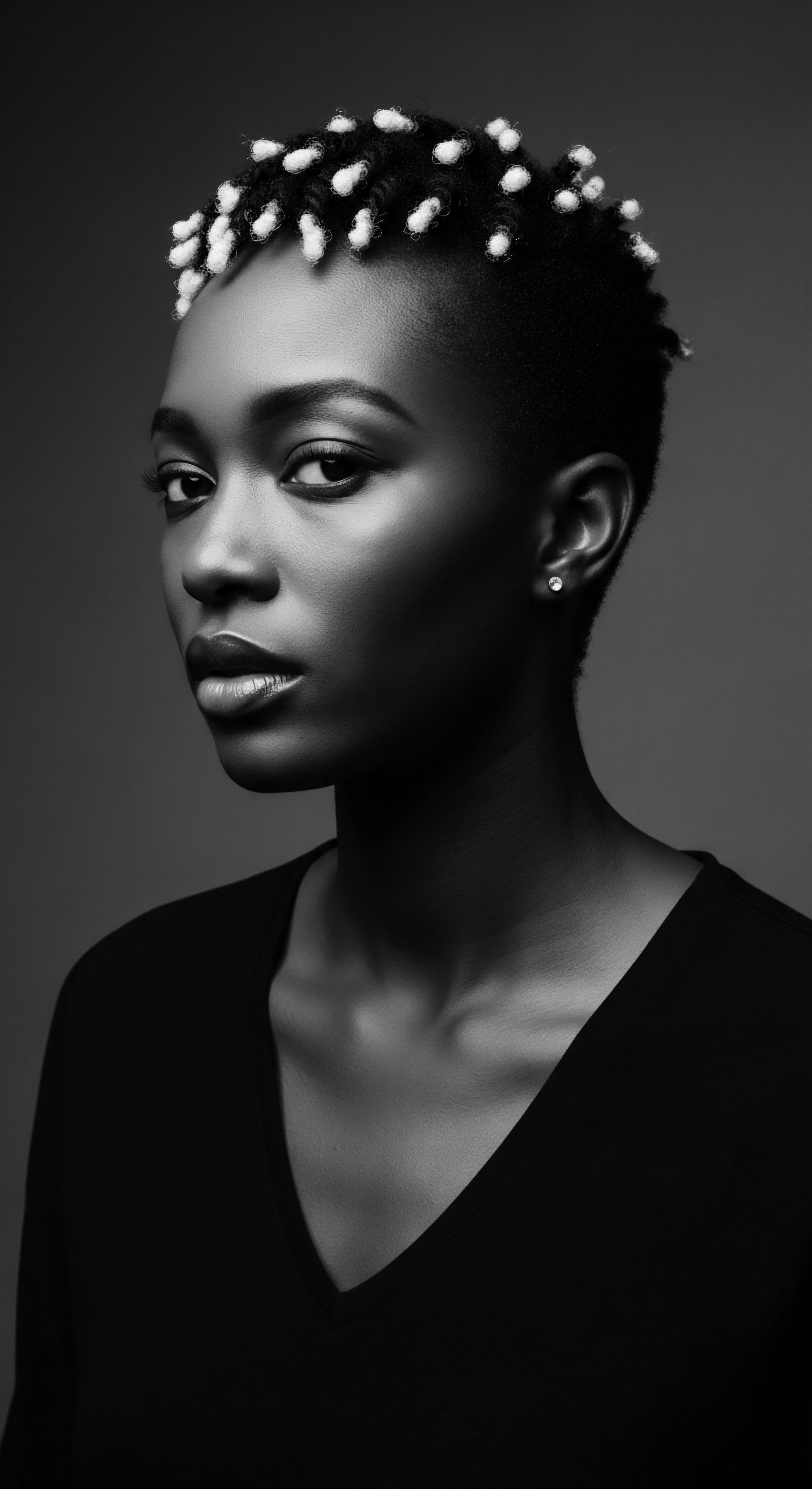
Reflection
The journey through the elliptical follicle’s legacy reveals a story far richer than mere biology. It speaks of a profound and enduring heritage, one where the intrinsic nature of textured hair has always informed not only its care but also its profound significance within Black and mixed-race communities. From the ancient observations of how hair springs forth in magnificent coils, necessitating unique methods of protection and nourishment, to the intentional artistry of styling that shaped identity and resistance, the elliptical follicle stands as a silent witness to a living archive of wisdom.
The ‘Soul of a Strand’ resides not just in its individual helix, but in the collective memory of hands that have tended it, of cultures that have revered it, and of spirits that have found voice through its undeniable presence. This is a story of resilience, of beauty forged in understanding, and of a heritage that continues to unfurl, inviting us to honor the past as we step into a future of unbound self-expression.
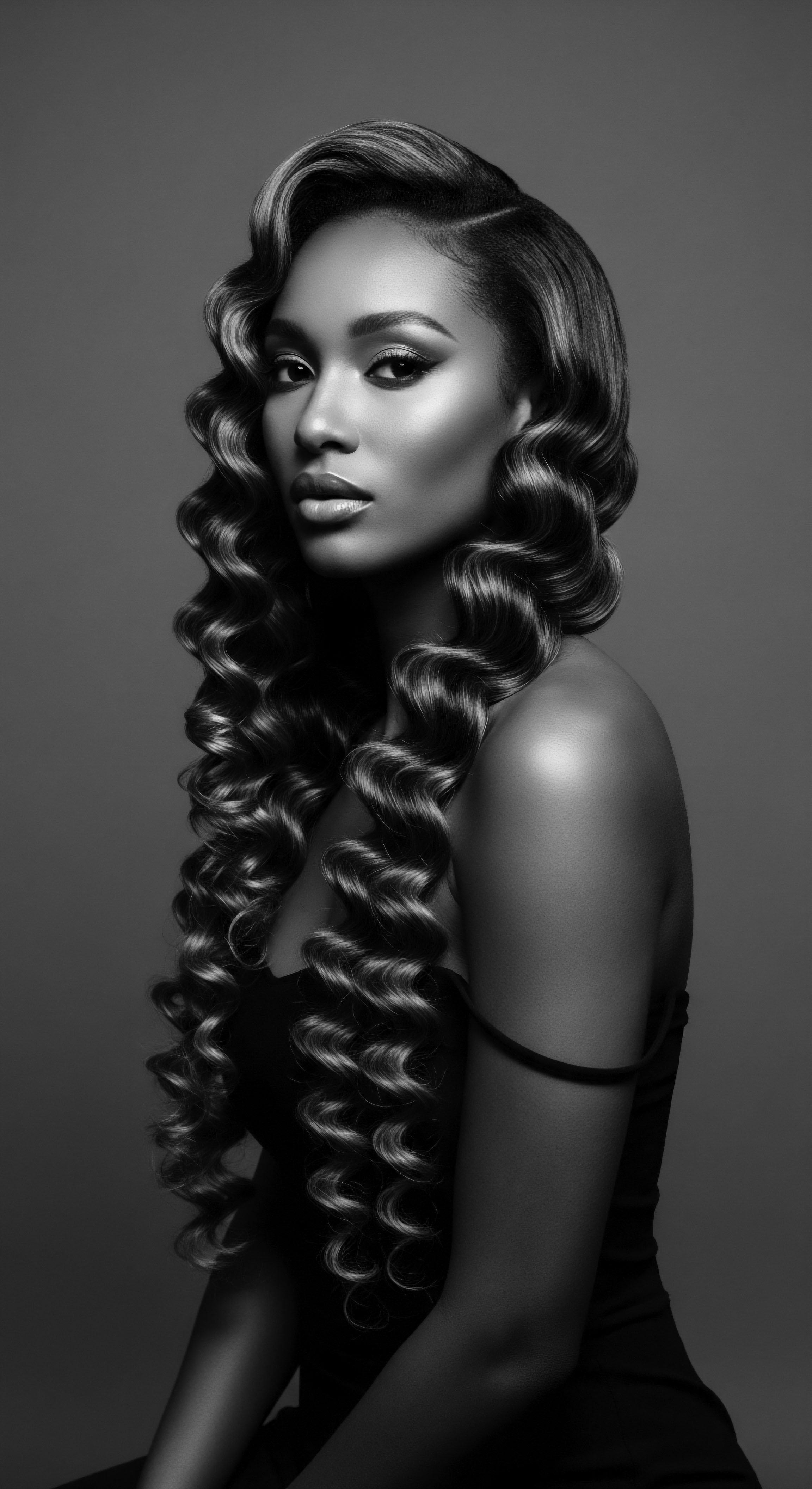
References
- Afriklens. (2024). African Hairstyles ❉ Cultural Significance and Legacy.
- Allen, M. (2021, February 17). Braids? Oh, We Go Way Back. Royaltee Magazine .
- Ajmera, A. R. (2022). The Way of the Goddess ❉ Daily Rituals to Awaken Your Inner Warrior and Discover Your True Self .
- BLAM UK CIC. (2022, September 15). The history of Black Hair.
- Cécred. (2025). The Role of Hair in Shaping Identities.
- Colomas, J. (2023, December 2). Unlock Ancient Hair Care Secrets ❉ Discover Global Rituals for Lustrous Locks.
- Croda Beauty. (2025, March 26). Advancing the future of textured hair solutions.
- Curl Witch. (2024, September 30). The Science of Hair Texture ❉ Understanding Curl Patterns.
- Delilah Hair Studio. (n.d.). Curls – Types & Curly Hair Follicle Shape.
- JD Institute of Fashion Technology. (2021, June 23). HEADWRAPS ❉ HISTORY AND EVOLUTION.
- The Kurl Kitchen. (2024, November 5). The Cultural Significance Of Natural Hair In Different Communities.
- Livara Natural Organics. (2023, February 7). Black History Month ❉ The Rich History of Our African Hair.
- Livara Natural Organics. (2023, December 10). African Ingredients for Healthy Hair ❉ Shea Butter.
- Massachusetts Institute of Technology. (2014, February 13). The physics of curly hair. MIT News .
- Medical News Today. (2017, July 21). Curly or straight ❉ What determines hair shape?
- My Sasun. (2023, May 19). Exploring the Rich World of Nigerian Hair and Beauty Products.
- NaturallyCurly. (2014, March 14). The Physics of Curly Hair. Beautycon.com .
- Newsweek. (2022, August 24). Everything You Need To Know About The Ancient Art Of Hair Oiling.
- Obscure Histories. (2024, February 13). Ancient Gems ❉ A Historical Survey of African Beauty Techniques.
- Okan Africa Blog. (2020, October 8). The significance of hair in African culture.
- Parents. (2025, March 11). Braiding Is More Than a Protective Hairstyle—It’s a Black Mothering Tradition.
- Physics. (2023, April 20). The Mechanics of Curly Hair.
- PULSE Magazine. (2022, June 7). Cultural Head Coverings.
- Reddit. (2025, May 27). Recreation of African hairstyles (Pre-Colonial) ❉ r/blackladies.
- Reddit. (2025, May 28). Recreation of African hairstyles (Pre-Colonial) ❉ r/Africa.
- Sartorial Magazine. (2025, January 13). Braids, Locs, and Beyond ❉ The Beauty and History of Protective Styles.
- Sonson. (2021, April 24). The History of Headwraps and Black Culture.
- Substack. (2025, May 4). Ancestral Hair Rituals to Nourish Your Hair and Soul.
- Sydney Beauty Supply. (2017, November 2). An Ancient Secret to Growing Long Hair.
- The African American Museum of Iowa. (n.d.). History of Hair.
- The Kurl Kitchen. (2024, November 5). The Cultural Significance Of Natural Hair In Different Communities.
- Umthi. (2023, September 14). The Cultural Significance and Representation of Afro-Textured Hair.
- VertexAISearch. (2024, March 1). The Resilient Tresses ❉ West African Black Hair History from the 1400s to Today.
- VertexAISearch. (2025, March 15). The History of Chebe Powder ❉ An Ancient African Hair Secret for Hair Growth.
- Wraps n’ Raps. (2024, June 12). African American Head Wrap History ❉ From Slavery to Contemporary Pride.
